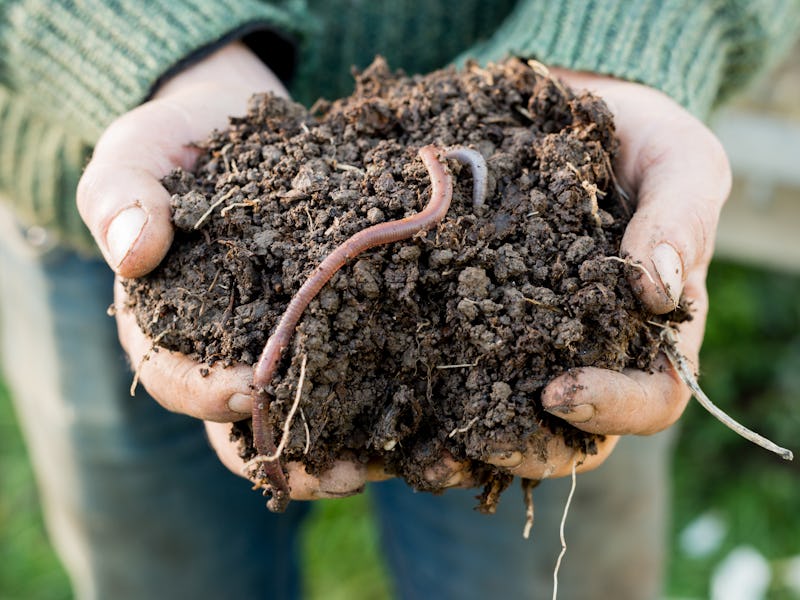A hotter planet could change one of nature's most important and unseen creatures
“It does feel like we’ve been neglecting what’s beneath our feet."

Scientists have spelled out some of the major changes in biodiversity climate change is expected to bring on land, in the ocean, and in the sky. But what about the vast natural world beneath our feet?
Earthworms are a key component of underground ecosystems, aerating soil and breaking down decaying organic matter. New research suggests they could be particularly vulnerable to the effects of climate change.
A study published Thursday in the journal Science found that they’re more sensitive to heat and moisture than previously believed, and that their global distribution is the exact opposite of what scientists might expect. These new findings challenge previous understandings and bring up new questions about how the small annelids will fare in the face of climate change — and what that means for us.
Hidden in the soil we walk (and build) on, earthworms play a vital role as “ecosystem engineers,” the team behind the new study writes. They remove dead plants and turn them into nutrients, improve soil structure, and even influence climate regulation.
Earthworms also serve as a conduit to understanding communities of soil microorganisms because of their larger size, says Helen Phillips, Ph.D., a postdoctoral researcher at the German Centre for Integrative Biodiversity Research and lead study author.
“Unlike other soil organisms, you dig a hole and you can see the earthworms,” Phillips tells Inverse.
The new study which pulls together research from nearly 7,000 sites in 57 countries, represents the broadest look yet at global earthworm distribution. The researchers examined factors like soil quality; trees and crops in the area; elevation; climate conditions; and water retention to reach their conclusions about earthworms.
Previous studies suggested that soil quality — which includes properties like pH and carbon levels — is the main driver of earthworm health. But it turns out that climate-related conditions, namely temperature and moisture, may play an even bigger role.
“We were somewhat expecting the soil to be the most important driver of the pattern, and actually it wasn’t,” Phillips says.
As global temperatures rise and precipitation patterns look different, the fact that earthworms are vulnerable to those trends raises questions about their future.
“We are seeing climate changing, and it is going to continue to change,” Phillips says. “What does that mean for earthworms and the functions they provide us?”
“Unlike other soil organisms, you dig a hole and you can see the earthworms,” says researcher Helen Phillips.
Tropics vs. temperate areas
Analyzing data from around the world allowed the researchers to spot another surprising trend: where on Earth worms are most abundant. In above-ground plant and animal species, the tropics are known for having the greatest biodiversity.
“What we found with earthworms is the opposite was true,” Phillips says.
They’re actually more abundant, with greater species variation, in temperate regions when looking at local data. To be clear, the tropics may still have more total species when viewed as a whole. A given soil sample in the tropics will turn up fewer species than a sample in a temperate area, but in the tropics, “if you move down the road you might get more.”
Still, the patterns contrast what’s happening above ground. And while that was somewhat unexpected, the trends follow those of other soil organisms, Phillips says. The paper notes that “mismatches between above and belowground biodiversity have been predicted but not shown across the globe for soil fauna at the local scale.”
Researching that mismatch will help to inform conservation efforts, which tend to be focused above the soil’s surface, Phillips says. Concentrating on more visibly affected regions would make sense if biodiversity peaks were all in the same places — but the new study suggests they’re not.
The new research is also a step toward understanding how climate patterns could affect earthworms, and what that means for ecosystems in a broader sense — not just the plants and animals we can see.
“It does feel like we’ve been neglecting what’s beneath our feet,” Phillips says. “We can’t get a really good picture of biodiversity as a whole until we’ve sampled every possible nook and cranny.”
Abstract: Soil organisms, including earthworms, are a key component of terrestrial ecosystems. However, little is known about their diversity, their distribution, and the threats affecting them. We compiled a global dataset of sampled earthworm communities from 6928 sites in 57 countries as a basis for predicting patterns in earthworm diversity, abundance, and biomass. We found that local species richness and abundance typically peaked at higher latitudes, displaying patterns opposite to those observed in aboveground organisms. However, high species dissimilarity across tropical locations may cause diversity across the entirety of the tropics to be higher than elsewhere. Climate variables were found to be more important in shaping earthworm communities than soil properties or habitat cover. These findings suggest that climate change may have serious implications for earthworm communities and for the functions they provide.